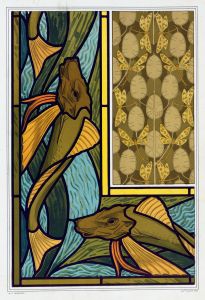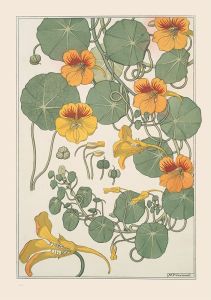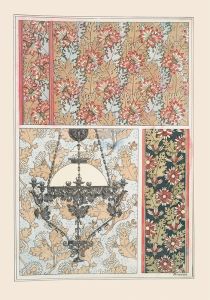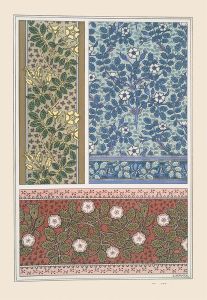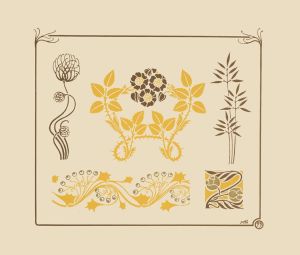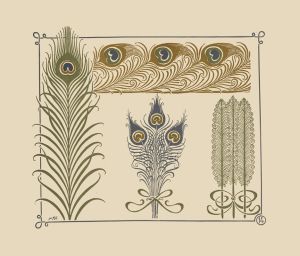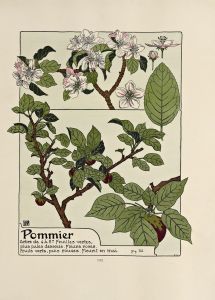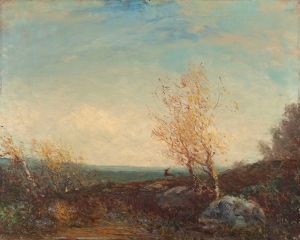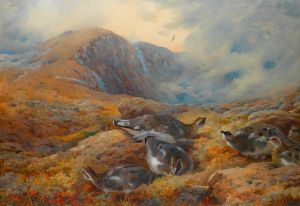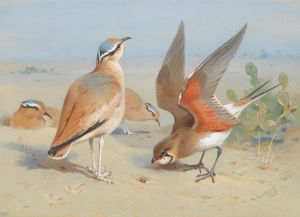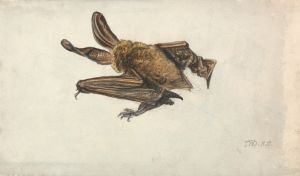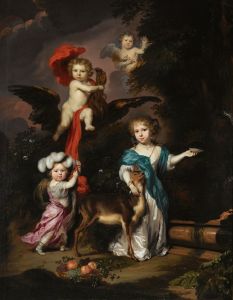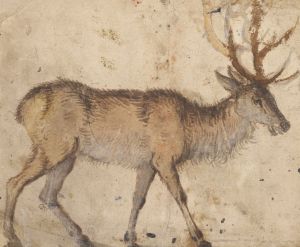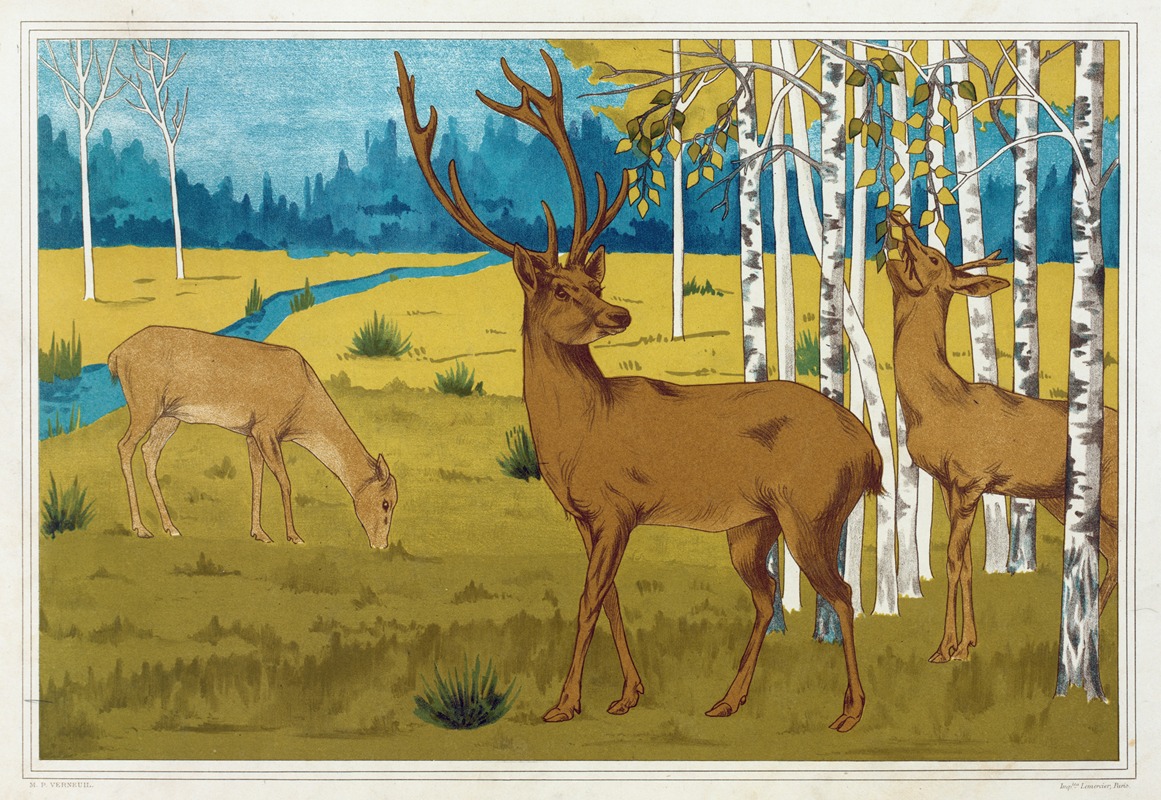
Cerfs
A hand-painted replica of Maurice Pillard Verneuil’s masterpiece Cerfs, meticulously crafted by professional artists to capture the true essence of the original. Each piece is created with museum-quality canvas and rare mineral pigments, carefully painted by experienced artists with delicate brushstrokes and rich, layered colors to perfectly recreate the texture of the original artwork. Unlike machine-printed reproductions, this hand-painted version brings the painting to life, infused with the artist’s emotions and skill in every stroke. Whether for personal collection or home decoration, it instantly elevates the artistic atmosphere of any space.
Maurice Pillard Verneuil was a prominent French artist and designer known for his contributions to the Art Nouveau movement. Born in 1869, Verneuil was celebrated for his innovative use of natural forms and his ability to blend them seamlessly into decorative arts. His works often featured intricate patterns and vibrant colors, drawing inspiration from the natural world, including plants, animals, and marine life.
One of Verneuil's notable works is "Cerfs," which translates to "Deer" in English. This piece exemplifies his skill in capturing the elegance and grace of wildlife, a common theme in his oeuvre. While specific details about the creation date and the medium of "Cerfs" are not extensively documented, it is consistent with Verneuil's style during the height of the Art Nouveau period, which spanned from the late 19th century to the early 20th century.
"Art Nouveau," meaning "New Art" in French, was characterized by its emphasis on natural forms, curved lines, and intricate details. Verneuil was a master of this style, and his work often featured a harmonious blend of organic shapes and decorative elements. In "Cerfs," Verneuil likely employed these techniques to depict deer in a stylized manner, emphasizing their fluid movements and the natural beauty of their forms.
Verneuil's approach to art was heavily influenced by his background in design and his exposure to various artistic traditions. He was known to incorporate elements from Japanese art, which was gaining popularity in Europe at the time, as well as motifs from other cultures. This eclectic mix of influences allowed Verneuil to create works that were both unique and reflective of the broader Art Nouveau movement.
In addition to his paintings and illustrations, Verneuil was also a prolific author and educator. He published several books on design and ornamentation, sharing his knowledge and passion for art with a wider audience. His publications often included detailed illustrations and served as valuable resources for artists and designers of his time.
While "Cerfs" is a testament to Verneuil's artistic talent, it also reflects the broader cultural and artistic trends of the period. The depiction of animals in art was a popular theme during the Art Nouveau era, as artists sought to capture the beauty and complexity of the natural world. Verneuil's work, including "Cerfs," contributed to this movement by offering a fresh perspective on traditional subjects.
Today, Maurice Pillard Verneuil is remembered as a key figure in the Art Nouveau movement, and his works continue to be appreciated for their artistic and historical significance. "Cerfs," like many of his other pieces, remains a testament to his ability to blend art and nature in a way that is both aesthetically pleasing and intellectually engaging. His legacy lives on through his contributions to the world of art and design, inspiring future generations to explore the beauty of the natural world through creative expression.





